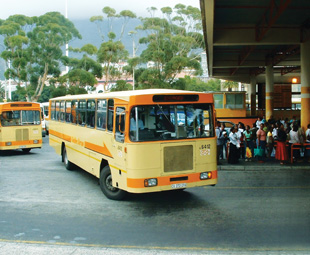Barriers slow entry of women bus owners

The bus owners fraternity has grown significantly over the past few decades but women find it difficult to enter the industry. FOCUS investigates the situation…
The Southern African Bus Operators Association (SABOA), launched in 1980 with just five members, today boasts just over 1 000 members who deploy a combined fleet of some 13 000 buses. While SABOA has committed itself to transformation and equity, as guided by government, the entry of women into the industry as bus owners is a slow process, says Eric Cornelius, executive manager, SABOA.
“The bus industry, both in South Africa and in the neighbouring countries, has always been a male-dominated arena. Historically, this was largely because buses are heavy machines, requiring a man’s physical strength to drive and repair. However, the industry has evolved significantly over the past 20 years and women are being employed as much as in other industries to meet employment equity quotas,” he says.
“Today, you will find women not only in managerial and administrative positions within bus fleets, but also as bus technicians and bus drivers. The buses conducting duty today are sophisticated, with automated transmissions, power steering and comfortable cockpits, making it irrelevant whether the driver is male or female.
“The big challenge for our industry as far as introducing new women bus owners is the issue of finance. A bus costs well over a million rand and banks are reluctant to finance new entrants into the market, especially applicants with very little or no experience in the bus industry. Furthermore, the myriad legalities involved in commercial passenger transport make becoming a bus operator an extremely slow process, so even women who do qualify for financing from the banks, will have to go through the long, slow process of becoming accredited by the DoT.
“There is no doubt that these barriers to entry need to be addressed by all stakeholders. Aspiring women bus owners/operators need to compile a comprehensive and convincing business plan to secure the necessary capital and the industry needs to find ways, in conjunction with government, of speeding up the process of assimilating women operators into the industry,” concludes Cornelius.
Published by
Focus on Transport
focusmagsa




